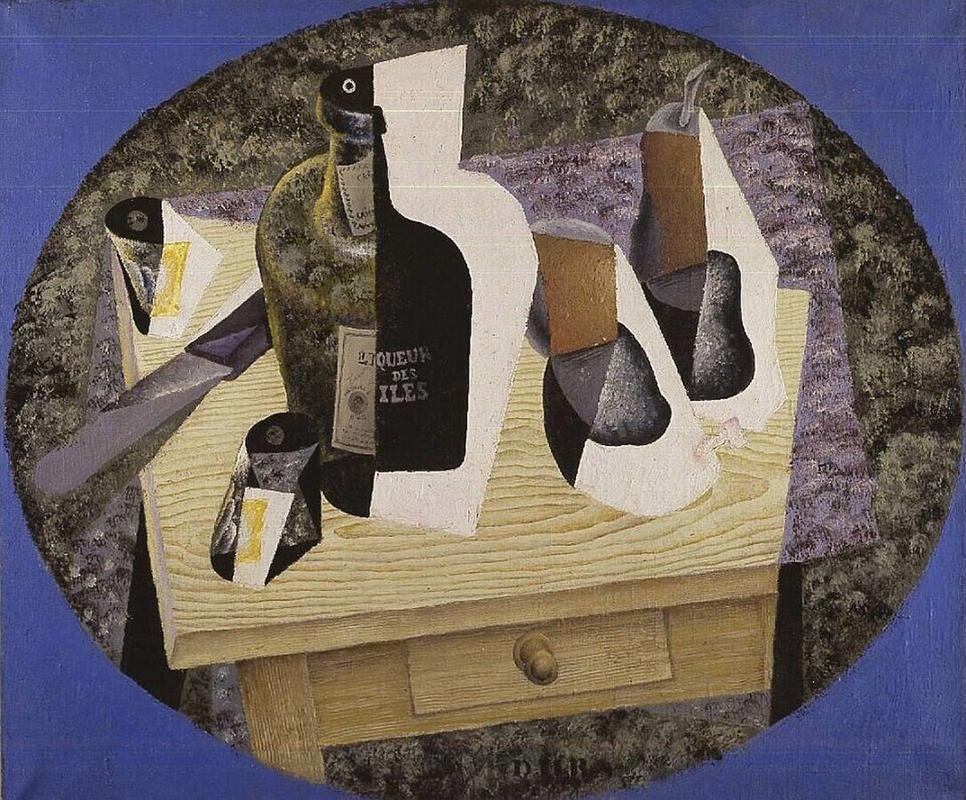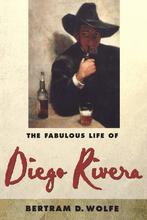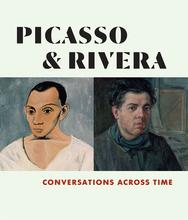More about Still Life with a Liqueur Bottle
- All
- Info
- Shop

Contributor
Pablo Picasso's monopoly on cubism seriously sucked for Diego Rivera.
Picasso’s apparent monopoly on cubism was the reason that Cubism never stuck for Rivera, who needed to be the best of the best. Rivera is best known for his murals and his high-profile relationship with fellow Mexican artist Frida Kahlo. Nonetheless, the story of his Cubist years were formative for him as an artist as well as rich with juicy scandals.
Early on in his career, Rivera worked in Paris and became acquainted with the various posh artistic circles of the time. The classically trained artist fell in love with Cubism, but was not yet equipped to gracefully address his critics. At a gathering (and most likely after too many drinks) French poet Pierre Reverdy suggested that Rivera merely copied the work of other “true” cubists, provoking Rivera to slap Reverdy. The event that came to be known as l'affaire Rivera” (the Rivera affair) ended in the poet yanking out the painter’s hair. It appears as if Rivera couldn’t catch a break in regards to random bursts of violence during the Paris years. Rivera, who shared his bed with many women, apparently went at his mistress Marevna Vorobieff with knives on more than one occasion.
Apart from pesky critics and relationship violence, during his Cubist years Rivera challenged the merit of Pablo Picasso, insinuating that Picasso copied his works. Picasso, whom at the time was Rivera’s friend and comrade in cubism was none too pleased to be accused and the relationship turned sour. After much drama, Diego left Cubism with the reasoning that he needed to find a “way in art truer to his closest feelings”. Some questioned his motives to changing styles, writing him off as jealous of “greater” cubists Picasso and Braque. Was Rivera embarrassed of the bad press of the infamous Rivera affair? Did he want to separate himself from the movement after criticizing Picasso? Questionable motives aside, giving up his financial stability and veering away from both what his art dealer and his family wanted, Rivera moved toward realism and the work for which he would would become famous. Art historians have concluded that Rivera’s tumultuous reckoning with Cubism paved the way for his masterpieces to come, making Rivera’s claim that cubism was just a passageway ring true. A violent and tumultuous passageway to realism indeed.
Sources
- Starr, James Michael. "Diego Rivera: The Cubist Portraits, 1913-1917 at the Meadows Museum." Diego Rivera Web Museum. November 19, 2010. Accessed February 22, 2018. http://www.diegorivera.com/?p=82.
- "'Still Life', Diego Rivera, 1916." The Tate Collection. Accessed February 22, 2018. http://www.tate.org.uk/art/artworks/rivera-still-life-t00317.
- Marnham, Patrick. Dreaming with his eyes open: a life of Diego Rivera. Berkeley: University of California Press, 2000.
- Sierra, Sonia. "El día que Pablo Picasso y Diego Rivera terminaron su amistad." El Universal. May 26, 2017. Accessed February 22, 2018. http://www.eluniversal.com.mx/articulo/cultura/artes-visuales/2017/05/2…













